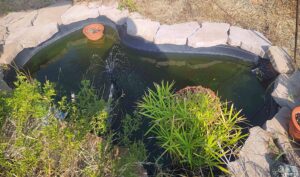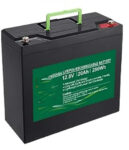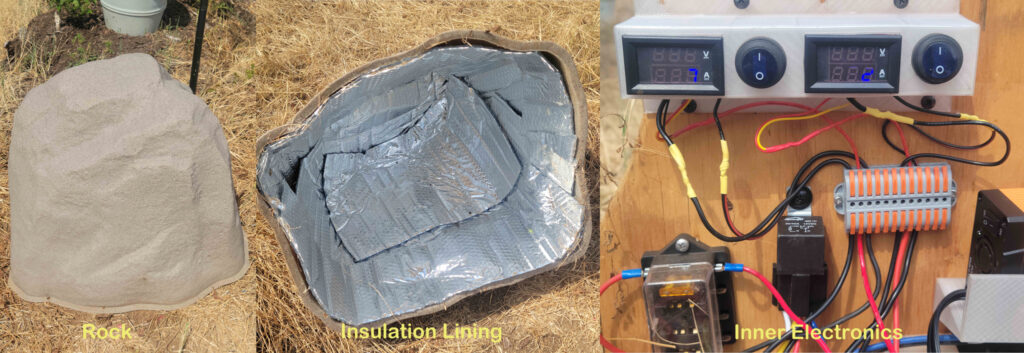People frequently suggest use of a Lessons Learned database as a best practice. Many companies have invested large amounts of time and money in creating those databases. Both the exceptional projects, where nothing goes wrong, and the plagued-ridden projects that quickly become fodder for our nightmares, provide ample lessons learned. It’s not that I don’t believe in the concept, but almost nobody reads those databases. They are either too confusing, poorly organized, or so sanitized that you don’t even recognize the project you were leading.
The reasons don’t matter. As well-intentioned as the idea of a lessons-learned database is, it will never attain the success envisioned by its custodians. Until these databases can contain the nuances of the project and the pain involved in striving to overcome all the obstacles encountered, a lessons-learned database is little more than bits of data. Let me give you my own example of lessons learned.
My Project:

The goldfish pond
Texas summer is brutal on outdoor electronics, and this summer was especially difficult. My problems started when the filter in my outdoor goldfish pond became intermittent. It would run for a few minutes and then stop. As soon as I realized that the inverter fan never turned on, it was obvious the inverter was overheating and shutting down. Once it cooled down, it would restart, and the cycle would begin anew.
This repair was easy: replace the inverter. A few details—my load is only 18 watts. I was using a 300-watt inverter because the power surge on the smaller inverters would shut down my solar controller. This time, supply chain issues forced me to upgrade to a 500-watt inverter. This is where it all started to go wrong.
Like the smaller inverters, the turn-on surge of the 500-watt inverter was shutting down my controller. I could connect straight to the battery, but you never want to run a lithium battery completely empty. I trusted the low-voltage level of the controller much more than the one built into the battery. This time, I realized a small relay would do everything I wanted. Use the controller to drive the relay, and the battery to run the inverter when the relay was activated—problem solved. How little I knew.
The fan on the new inverter sounded like a small jet engine. Even with the fake rock cover, it was loud enough for the chickens to complain. A few days of operation and it was obvious the new inverter was far less efficient. Two hours after the sun went down, my pump was dead. A little math: my battery is a 20Ah battery, good for 1 amp for 20 hours or 20 amps for one hour, or any combination in between. Not quite true at the extremes, but close enough. My water filter consumes about 18 watts or 1.5 amps at 12 volts. With a 20Ah battery, I should be getting 13 hours of operation after the sun goes down.
 My first guess was the battery. Texas heat makes short work of batteries. Before I converted to LiFePO4 batteries, I was replacing the lead-acid batteries every year. This was my first LiFePO4 battery, and it was now over two years old.
My first guess was the battery. Texas heat makes short work of batteries. Before I converted to LiFePO4 batteries, I was replacing the lead-acid batteries every year. This was my first LiFePO4 battery, and it was now over two years old.
I tend to complicate power installations with a lot of switches and gauges. I know it adds cost, reduces reliability, and confuses my wife, but I’ve always loved gauges and switches. Reading the power consumption meter gave me my first surprise: I was drawing over 6 amps. At 12 volts, that was 72 watts. My fish would be lucky to get 3 hours of filtered water after the sun went down.
That kind of power consumption generates a lot of heat. I wasn’t surprised that the inverter was so hot I could barely touch it. Unplugging my filter, the inverter was still pulling 36 watts with no load. I knew that the efficiency of the larger converter was lower with the lighter load, but this was ridiculous. At least I understood the jet-engine sound from the fan.
Considering my options, I had a flash of inspiration: my relay circuit would also fix the startup problem with the lower-wattage inverter. I put in a 100-watt inverter, and the no-load current dropped to almost zero.
This still did not explain why my pump was drawing twice my calculated current. Yes, I needed to clean the filter pads, but double the power? I had more troubleshooting to do.

Too hot to touch
My handheld meter showed almost exactly half the current my power meter was showing. Fortunately, the power meter was modular, and replacing it took about 30 seconds. That done, my reading was 1.5 amps—exactly the 18 watts I was expecting.
I wanted to give it a day of operation before making it permanent. That’s when I got my next surprise: although completely disconnected, the 500-watt inverter was still too hot to touch. My plastic rock was causing a greenhouse effect on the interior, raising the internal temperature far above the already sweltering 104 degrees. Now, the jet fan effect and dying electronics made sense. I added a quarter-inch of reflective bubble insulation on the inside of my rock. This was enough to disrupt the greenhouse effect and keep the interior electronics closer to ambient temperature.

Let’s recap:
- My inverter was going into thermal overload and shutting down because the artificial rock was creating temperatures far above the inverter’s rated temperature. I missed that because I was waiting for evening temperatures before working outside.
- Lesson learned: Always try to troubleshoot in the environment your failure is occurring.
- Both the fan failure and the power meter failure could be attributed to the extreme heat they were being exposed to.
- Lesson learned: Don’t underestimate the damage excessive heat can cause.
- Even though my meter was giving an incorrect reading, the 500 watt inverter unloaded loss was 18 watts, almost identical to the power demands of my filter pump. The unloaded loss on the 100 watt inverter was less than a watt.
- Lesson learned: When it comes to inverters, using a significantly higher power rating will probably increase inefficiency losses.
- I was seeing artificially high power readings because my meter had failed.
- Lesson learned: Meters will fail, trust but verify.
- My artificial rock is a thin plastic shell. The shell was creating a greenhouse effect, trapping the heat inside and exposing the electronics inside to temperatures far above ambient. Adding a quarter inch of insulation to the interior brought the temperature much closer to ambient.
- Lesson learned: If you have an outdoor installation, investing in a little insulation can provide a huge temperature benefit and reliability boost.
Wrap-up:
The last few weeks in Texas have had exceptional temperatures. We’re finally experiencing a break, but we had over twenty days in a row hitting 100 degrees or above. My car’s interior temperature gauge often displayed 110 or above when I first started it up.
My apologies; the above paragraph is simply rambling to take your mind off the lessons learned. Unfortunately, it’s a fine line between boring you to the point you stop reading and giving you a slight break from lessons learned.
Back to lessons learned. You accompanied me on the journey and saw the reasons behind each lesson. Now close your eyes and try to recount those lessons.
No insult intended but you probably remembered, “Heat is bad,” and, “Insulation is good.” That’s not your fault. Without the full stimulus—roasting heat, burned fingers, blinding sunlight—you are unlikely to remember the lessons that have been etched into my mind.
And let’s not forget the those of you out there who don’t feel I analyzed my lessons learned correctly. When I’m reading lessons learned, I frequently find myself analyzing the situation and wondering what isn’t being said, especially if I took part in the program.
Lessons learned databases are a great concept, but all of us have a lot more work to do to make them useful.
© 2023, Byron Seastrunk. All rights reserved.











Recent Comments